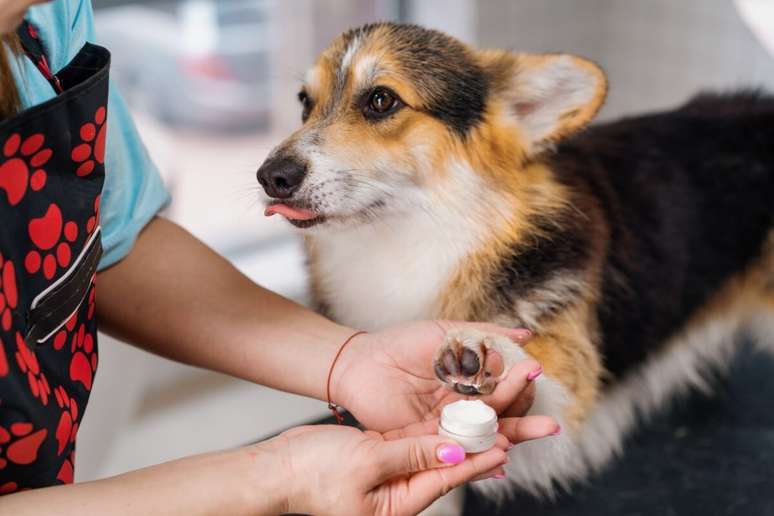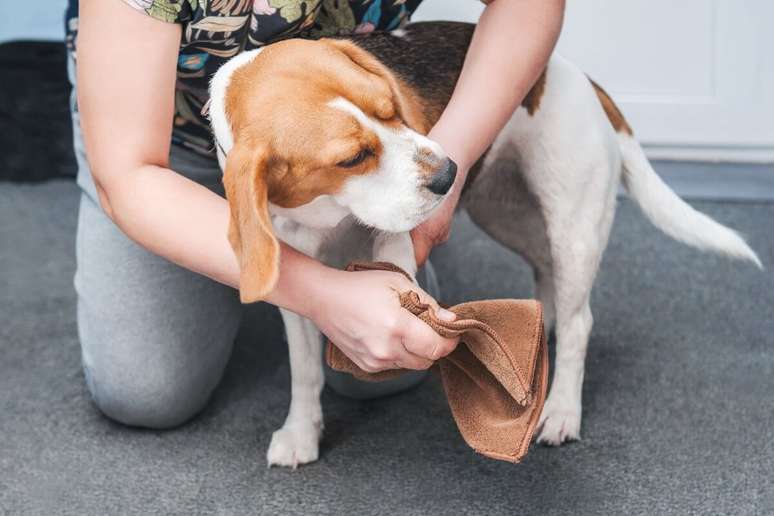Find out how to protect them and avoid problems that influence the mobility and well -being of the animal
Dog legs play a key role in their mobility and interaction with the environment. However, since they are constantly in contact with the soil, they are subject to several factors that can compromise their health.
During tours, dogs can trample rough, warm, cold or dirty surfaces and come into contact with chemicals, small cutting objects and infectious agents. All this can cause uncomfortable discomfort, injuries and problems even more serious such as infections and mobility difficulties.
Therefore, it is essential to be aware of the signs that can indicate problems with the dog’s legs. Excessive licking, difficulty walking, swelling, redness, touch sensitivity and changes in the consistency of the planar cushions are some of the main indications that something is wrong. When these signs appear, it is essential to study the cause and, if necessary, look for a guide from a veterinarian.
In addition, some daily treatments can help prevent problems and ensure that your dog’s legs are always healthy and protected. See below!
1. Regular inspection of the legs
Check the legs of yours cub It is regularly essential to identify any problem soon. During the inspection, observe if there are cuts, cracks, swelling, thorns, stones or dirt attached between the fingers and the planar cushions. Small objects, such as fragments or barbes, can present in these regions and cause pain or infections. In addition, be aware of the signs of irritation or touch sensitivity, which can indicate allergies or contacts with aggressive substances.
2.
The cleaning of the legs should be part of the dog’s care routine. Wash them every time you walk through dirty places or by contacting mud, sand or unknown substances. Use hot water and a neutral soap for dogs to remove dirt and prevent skin irritation.
After washing, dry your legs well with a soft towel to avoid excessive humidity, which can favor the proliferation of mushrooms and bacteria. If the animal usually walks in urban areas, where there are residues of chemicals on the floor, cleaning becomes even more important to prevent allergies and poisoning.
3. Cutting nails
Very long nails can damage the dog’s posture, cause pain when walking and also causing Lesions on the legs. The ideal is to keep the nails cut by cutting them every time they start touching the floor. To do this, use a cutter for specific dogs and be careful not to reach the sensitive part of the nail, called Sabugo region – rose that contains blood vessels and nerves – since this can cause pain and bleeding. If you are not sure to perform the procedure, look for a professional pet shop Or a veterinarian to guarantee a safe and appropriate cut.

4. Hydration of planar cushions
Planary cushions for dogs can dry and break, especially in dry climates or after frequent contacts with rough surfaces. To prevent this from happening, it is important to maintain the hydration of these areas. Use specific products to hydrate planar cushions, since human moisturizers can contain damage to dogs.
5. Protection against extreme temperatures
Dog legs are sensitive to very high or very low temperatures. In summer, the asphalt can become extremely hot and cause burns on the planar cushions. To avoid this, you prefer Wake up with your dog In colder times, as in the early morning or late afternoon. In winter, intense cold and contact with frozen surfaces can cause discomfort and even cracks. In both cases, the use of specific boots or protectors can help maintain protected and healthy.
6. Hair appears between the fingers
The dogs of some breeds have the long between their fingers, which can accumulate dirt, humidity and even small debris that cause discomfort. In addition, emboral hair can make it difficult to move the legs naturally. Arrange these regularly helps to maintain hygiene and facilitates the inspection of the legs. To do this, use round scissors or ask a grooming professional to ensure a safe cut.
7. Regular veterinary consultations
Even with all care, it is important to bring your dog to veterinarian regularly for check. The professional can soon identify problems and indicate adequate treatments in the event of changes to the PAWs. Furthermore, in case of deep cuts, infections or persistent problems, the follow -up -up is indispensable to avoid more serious complications.
Source: Terra
Ben Stock is a lifestyle journalist and author at Gossipify. He writes about topics such as health, wellness, travel, food and home decor. He provides practical advice and inspiration to improve well-being, keeps readers up to date with latest lifestyle news and trends, known for his engaging writing style, in-depth analysis and unique perspectives.





-1iukdqb6yt84h.jpg)


